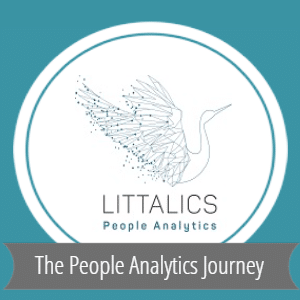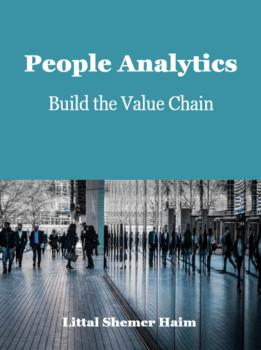Can you survive boring results in your People Analytics project? Many People Analysts in my network happily share remarkable findings, and obviously, they like to tell an exciting story from their data analysis. But unfortunately, sometimes, their success is mistakenly considered as discovering significant findings.
Insignificant results and storytelling with data
There are cases in People Analytics in which statistically insignificant results build a good story with data. Furthermore, sometimes insignificant results are the desired outcome.
One example is when there shouldn’t be significant differences between groups in the organization, and indeed, you don’t find them when you compare by demographics or organizational background variables. So please don’t exhaust yourself exploring the data until you find some notable differences in such a case.
Instead, stick to the business questions and research objectives, and summarize your analysis with what you already got. You may be surprised to find out that the sponsors of your analysis project embrace the so-called boring story and maybe even thrilled to have it.
Another example is when you gain insights that confirm an already known fact or domain knowledge. In such a case, not-so-exciting results are good results. Furthermore, validating established professional wisdom may say something about your data quality and integrity. So as long as you follow best practices in analytics, embrace the tiresome results and make sure to continue the data maintenance.
Leverage multivariate statistics for new insights
Of course, there is always some value in confirming and validating well-established hypotheses. However, if you do want to bring something new to the table, you can always try to enrich your analysis.
For example, you can integrate data from various sources and explore interactions of variables. Unfortunately, multivariate statistics is not always in the skillset of people analysts, but they can contribute new perspectives to any discussion when it does. Therefore, I recommend going back to your notebooks of statistics fundamentals. Perhaps you’ll find helpful technics in your good-old learning materials.
In my lecture at the People Analytics World 2022, I demonstrated a case of an organization that was subjected to strict regulations regarding equal pay. Comparing men’s and women’s salaries did not reveal striking differences. However, adding a single variable to the analysis, e.g., tenure, uncovered some hidden patterns of the gender pay gap related to things that happen along with the careers in this organization.
Know how data can play tricks on you
Many statistical fallacies lead to mistakes in data analysis and interpretation. Therefore, I encourage everyone who practices People Analytics in each part of the value chain of HR to explore common errors and be familiar with examples in order to avoid them.
In my introductory course, The People Analytics Journey, I mention the most prominent fallacies based on my experience. However, in this context of surviving boring results in People Analytics, I want to describe only one: Simpson’s Paradox.
Sometimes a statistical relationship that you explored within the entire workforce in your organization could be reversed within subgroups, e.g., gender, tenure, or education level groups. For example, I demonstrated Simpson’s Paradox in a case study where absenteeism was mildly negatively related to overload. However, when I analyzed the relationship within education level subgroups, it was positive among mid and high education levels.
So, when you are surprised by the boring results in your People Analytics project, especially when you expect to find a statistical relationship between variables based on the literature or your own experience, try to dig deeper and explore the statistical relationship among subgroups.
Support from subject matter experts
The pressure to bring exponential value insights is not unique to People Analytics. However, People Analytics practices are special because they still struggle to demonstrate the business case and ROI in many HR departments. But subject matter experts, i.e., HR and OD leaders, have a valuable role in supporting People Analysts. They can help them by preventing them from keeping on tediously analyzing when nothing interesting comes up in the analysis or guide them to dig deeper in the right direction.
It’s more than saving time and resources; it may prevent analysts from feeling incompetent when there is no exciting outcome to their unfruitful efforts. But, of course, to do so, HR and OD leaders must gain an analytical mindset.
On this journey, I always recommend a helping hand of an expert in organizational research and data science. Such engagement enables you to bridge the skillset gap of various players in a People Analytics project, push the entire team to more professional applications, and leverage the opportunity to increase your impact.







